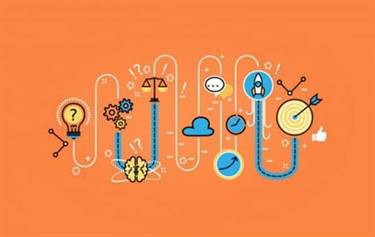Lack of design since changes are being put in the system might unknowingly affect other parts of the system. Easier to trace a problem in the system to its root https://www.globalcloudteam.com/ whenever errors are found, even after the project is completed. Documentation reduces the risks of losing personnel, easier to add people to the project.
Proper system design ensures that the developed system aligns with the desired functionality, performance, and scalability requirements. The Development stage involves the actual coding and programming of the system. Based on the design specifications, developers write code, create database structures, and implement necessary functionalities. Rigorous testing and quality assurance are performed to ensure the system’s accuracy, performance, and adherence to the design requirements. In other words, a life cycle model maps the various activities performed on a software product from its inception to retirement. Different life cycle models may plan the necessary development activities to phases in different ways.
System Development Life Cycle: Planning
Hence, with the requirements defined in SRS, multiple designs for the product architecture are present in the Design Document Specification (DDS). After evaluating all the possible factors, the most practical and logical design is chosen for development. In this stage, all the requirements for the target software are specified.

SDLC or the Software Development Life Cycle is a process that produces software with the highest quality and lowest cost in the shortest time possible. SDLC provides a well-structured flow of phases that help an organization to quickly produce high-quality software phases of the systems development life cycle which is well-tested and ready for production use. A software requirements specification (SRS) document that was created during the early stages is typically complemented with more detailed data and structure that will later be utilized during development.
System Development Life Cycle
The system integration and system testing are done in the fifth phase of the system development life cycle. This phase is normally carried out by Quality Assurance professionals to determine if the proposed design meets the initial business goals. The second phase of the system development life cycle is also the point where system analysis takes place and the functional requirements of the project are also considered. System development life cycle is very much important for an organization who wants to develop and implement a system from scratch. It provides a standard and guide line to develop a system in structure way and it meets the client’s requirements. When the system successfully implemented and installed into the end user environment then the maintenance stage of SDLC will start.

The spiral model goes through the planning, design, build and test phases over and over, with gradual improvements at each pass. This high-risk SDLC model throws most of its resources at development and works best for small projects. An extension of the waterfall model, this SDLC methodology tests at each stage of development. Regardless of which software development methodology is chosen, they follow the basic stages creating any digital product. But None of them is perfect, and each brings its favorable aspects and disadvantages for a specific software development project or a team.
What are the stages of a systems development life cycle?
SDLC done right can allow the highest level of management control and documentation. All parties agree on the goal upfront and see a clear plan for arriving at that goal. It’s also important to know that there is a strong focus on the testing phase. As the SDLC is a repetitive methodology, you have to ensure code quality at every cycle. Many organizations tend to spend few efforts on testing while a stronger focus on testing can save them a lot of rework, time, and money. The model can be viewed as a blueprint for success; following it blindly doesn’t necessarily guarantee success, but it increases the likelihood that the customer will be happy with the results.
Software developer will choose the right programming language and database according to software requirement specification. They’ll typically turn the SRS document they created into a more logical structure that can later be implemented in a programming language. Operation, training, and maintenance plans will all be drawn up so that developers know what they need to do throughout every stage of the cycle moving forward. Before we even begin with the planning stage, the best tip we can give you is to take time and acquire proper understanding of app development life cycle. In this guide, we’ll break down everything you need to know about the system development life cycle, including all of its stages.
Development
The information system will be integrated into its environment and eventually installed. After passing this stage, the software is theoretically ready for market and may be provided to any end-users. The analysis stage includes gathering all the specific details required for a new system as well as determining the first ideas for prototypes. Want to improve application quality and monitor application performance at every stage of the SDLC? Try out Stackify’s Retrace tool for free and experience how it can help your organization at producing higher-quality software. The Agile SDLC model separates the product into cycles and delivers a working product very quickly.
Dynamic Vapor Sorption: Exploring Moisture Sorption … – AZoM
Dynamic Vapor Sorption: Exploring Moisture Sorption ….
Posted: Wed, 11 Oct 2023 09:34:00 GMT [source]
Once you’ve completed all testing phases, it’s time to deploy your new application for customers to use. After deployment, the launch may involve marketing your new product or service so people know about its existence. If the software is in-house, it may mean implementing the change management process to ensure user training and acceptance. The software development life cycle (SDLC) is the process of planning, writing, modifying, and maintaining software. Developers use the methodology as they design and write modern software for computers, cloud deployment, mobile phones, video games, and more.
How to become a software developer
Each stage is important in the development process and differs from the others in terms of complexity, assets required, and intended functionalities. A system development life cycle (SDLC) is a systematic project management model that lays out the steps involved in developing an IT system, from conception to completion. The Hunter Business School Web Application Design and Development program has a class that teaches the system development Life cycle. The testing phase plays an important role in system development life cycle because it improves performance and reliability of developed system. It helps to verify that new system is developed properly that means according to software requirement specification.
Some popular languages like C/C++, Python, Java, etc. are put into use as per the software regulations. Today, most teams recognize that security is an integral part of the software development lifecycle. You can address security in SDLC following DevSecOps practices and conducting security assessments during the entire SDLC process. The spiral model combines the iterative model’s small repeated cycles with the waterfall model’s linear sequential flow to prioritize risk analysis. You can use the spiral model to ensure software’s gradual release and improvement by building prototypes at each phase. When teams develop software, they code and test on a different copy of the software than the one that the users have access to.
Spiral Model in Large-scale System Integration
In the early stages of software development, as computer systems began to grow in complexity, there was a clear need for a structured approach to manage the chaos. For instance, some SDLC models in software engineering emphasize a linear approach, where each phase must be completed before moving on to the next. In contrast, others might focus on a more flexible, iterative method, allowing for changes and adaptations as the project progresses.
- All changes to a system must be formally controlled via the Forensic Laboratory change control process, as defined in Chapter 7, Section 7.4.3.
- For instance, if a new feature is added to a pacemaker’s software, it must be rigorously tested for accuracy and reliability.
- This model prioritizes flexibility, adaptability, collaboration, communication, and quality while promoting early and continuous delivery.
- Models and frameworks have been developed to guide companies through an organized system development life cycle.
- When teams have clarity into the work getting done, there’s no telling how much more they can accomplish in the same amount of time.
